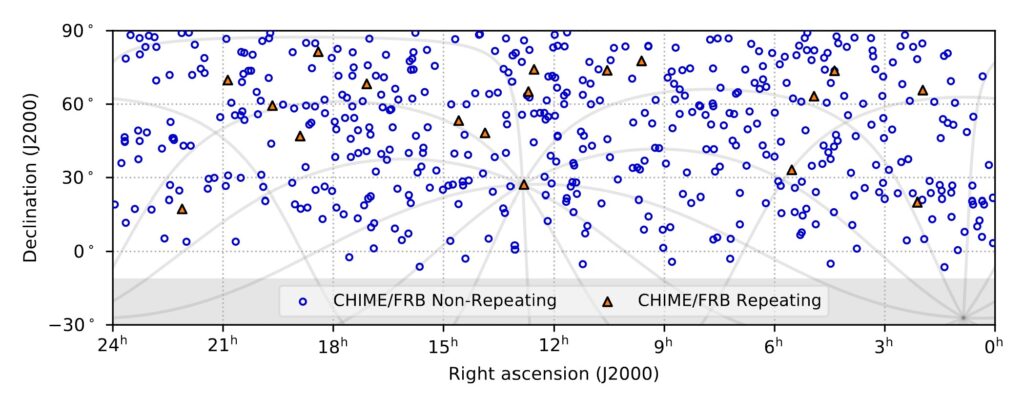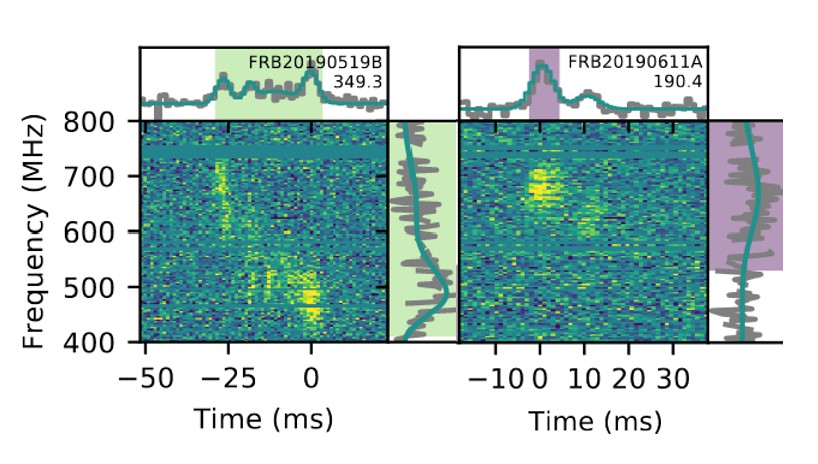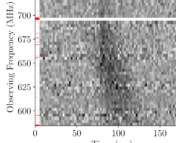Title: The First CHIME/FRB Fast Radio Burst Catalog
Authors: The CHIME/FRB Collaboration: M. Amiri, B. C. Andersen, K. Bandura, S. Berger, M. Bhardwaj, M. M. Boyce, P. J. Boyle, C. Brar, D. Breitman, T. Cassanelli, P. Chawla, T. Chen, J.-F. Cliche, A. Cook, D. Cubranic, A. P. Curtin, M. Deng, M. Dobbs, F. (A.)Dong, G. Eadie, M. Fandino, E. Fonseca, B. M. Gaensler, U. Giri, D. C. Good, M. Halpern, A. S. Hill, G. Hinshaw, A. Josephy, J. F. Kaczmarek, Z. Kader, J. W. Kania, V. M. Kaspi, T. L. Landecker, D. Lang, C. Leung, D. Li, H.-H. Lin, K. W. Masui, R. Mckinven, J. Mena-Parra, M. Merryfield, B. W. Meyers, D. Michilli, N. Milutinovic, A. Mirhosseini, M. Münchmeyer, A. Naidu, L. Newburgh, C. Ng, C. Patel, U.-L. Pen, E. Petroff, T. Pinsonneault-Marotte, Z. Pleunis, M. Rafiei-Ravandi, M. Rahman, S. M. Ransom, A. Renard, P. Sanghavi, P. Scholz, J. R. Shaw, K. Shin, S. R. Siegel, A. E. Sikora, S. Singh, K. M. Smith, I. Stairs, C. M. Tan, S. P. Tendulkar, K. Vanderlinde, H. Wang, D. Wulf, A. V. Zwaniga
Corresponding Author’s Institution: Massachusetts Institute of Technology, Cambridge, MA, USA
Status: Published in ApJS [open access]
Fast Radio Bursts (FRBs) are just as their name suggests – short, millisecond-long bursts observed in radio wavelengths all over the galaxy. But, despite the first burst being found in 2007, astronomers still aren’t sure what type of sources produce them. We do know that there seem to be two types of bursts – those that repeat and those that occur only once (non-repeaters). One of those repeating sources has recently been associated with a galactic magnetar, SGR 1935+2154 – a type of neutron star with a very powerful magnetic field. Another repeating source has been associated with the M81 galaxy.
In this paper from the CHIME/FRB Collaboration, the authors present a new catalog of FRBs (called “Catalog 1”), which more than doubles the number of known FRB sources. Statistical studies of the entire population are thus much more viable, and as a result, astronomers can begin to address some of the open questions about these mysterious sources.

How can we tell where FRBs come from?
Although one repeater has been associated with a galactic magnetar – meaning the magnetar lies within our galaxy – not all FRBs come from objects within our galaxy (i.e. extragalactic sources). We can see the distribution of FRBs (both repeaters and non-repeaters) in Figure 1.
FRBs, especially the ones outside our galaxy, travel a long way to get to us on Earth. We can look at something called the dispersion measure (DM) to tell how far the FRB has travelled. Space is not empty, and as the burst travels through the interstellar medium it gets scattered off electrons and other particles, which causes a “swoop”-like pattern to be seen in the data in Figure 2. The DM is the integrated number density of particles along the path of the waves, and is a quantitative way to estimate the distance that the burst has traveled to get to the telescope.

Are repeaters and non-repeaters from the same type of source?
One of the major open questions about FRBs is what type of source produces them. The differences between repeating and non-repeating sources leaves open the possibility that the two types may originate from different sources. The nature of repeating sources rules out cataclysmic scenarios (situations where one or more objects collide or explode, such as a neutron star merger), but some of these might be possible for a non-repeating source.

The authors of the paper start by looking at several characteristics (including distribution across the sky, DM, signal strength, flux, temporal width, and bandwidth) of both repeater and apparent non-repeater bursts to see if it is statistically plausible that they originate from the same distribution. If so, both repeaters and non-repeaters could come from the same underlying source population.
They find that repeaters and non-repeaters are distributed similarly across the sky and have similar dispersion measures. Repeaters and non-repeaters have similar flux and fluence distributions, meaning they give off a similar amount of radio waves over the course of the burst (fluence here refers to the integral of the flux over the duration of the burst).
However, repeaters and non-repeaters also show some differences. Their temporal widths and bandwidths appear to differ, which is shown in Figure 3 (as also previously reported with lower statistics in two papers [1] [2]). The fact that the widths differ between the two types of bursts is interesting, because it seems that repeater bursts last longer than non-repeaters on average. The bandwidth (the spread of radio frequencies observed for the burst) is also different between the two types, which is an additional indicator that repeaters and non-repeaters may come from different types of sources.
So, what is the major takeaway from this paper?
One of the most exciting aspects of this paper is the increase in the number of sources and bursts now available for FRB research. With higher statistics, studies of the entire population are more meaningful. Differences in repeaters and non repeaters (with regards to their temporal width and bandwidth) leave open the possibility that these come from different populations. The estimate of 820 bursts over the full sky per day presented in this paper means that statistics will continue to increase over time, more sources may be found to repeat, and more pieces of the FRB puzzle will continue to fall into place.
Astrobite edited by Konstantin Gerbig and Ali Crisp
Featured Image credit: the CHIME Collaboration via WVU website




